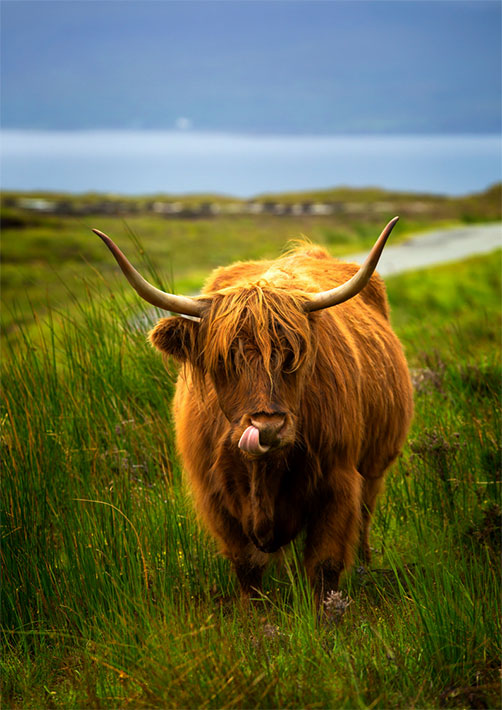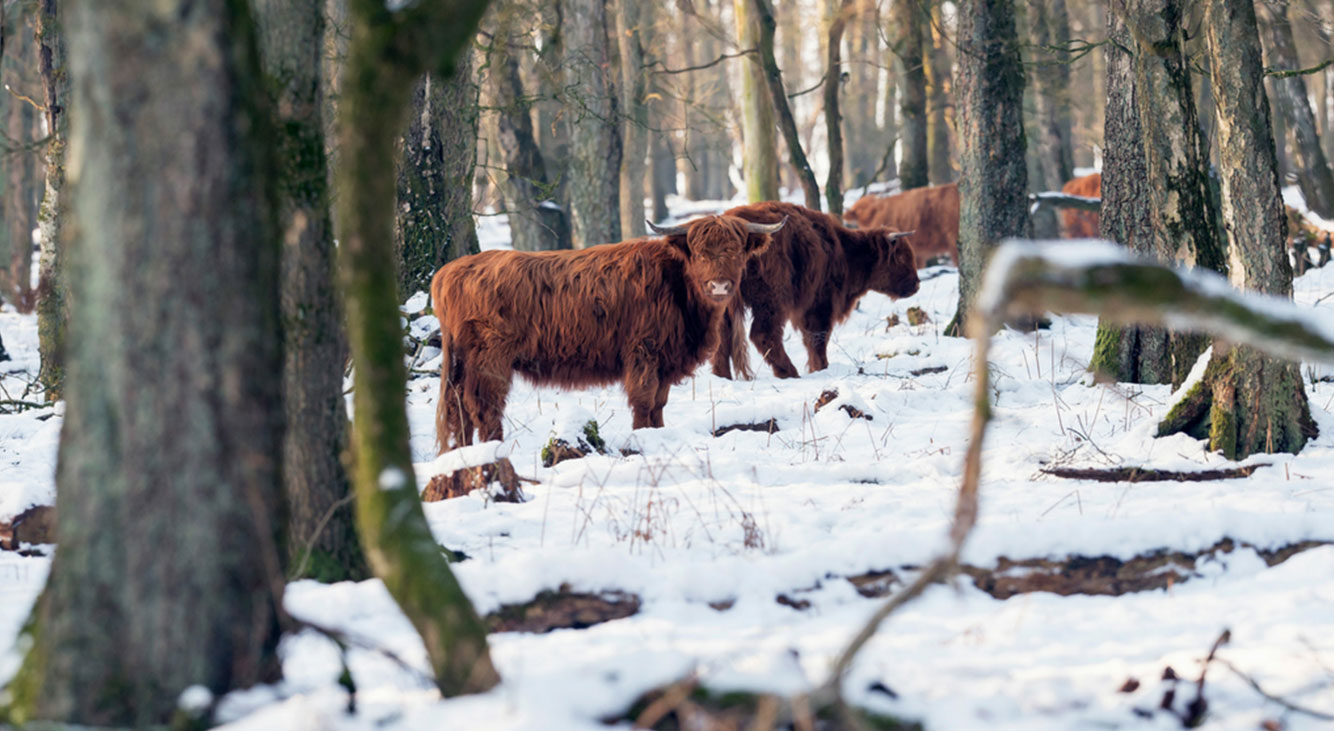REWILDING WITH REGENERATIVE AGRICULTURE
Our Landscapes co-evolved with large herbivores
There is no question that grazing and browsing by domestic herbivores in the absence of shepherding, and wild herbivores in the absence of predators, has had a devastating effect on our upland ecosystems.
The uplands would once have been a dynamic patchwork of meadows and woodlands, engineered by deer, elk, wild boar and horses. Predators, in particular the wolf, would have affected how those animals behaved, creating the right mix of animal impact and rest, for the ecosystem to thrive.
Holistic planned grazing offers a tried and tested way of achieving these same results with domestic livestock.

REGENERATE THE SOILS ECOSYSTEM AND BIODIVERSITY WILL RETURN
Upland soils are rapidly regenerated with the correct management of large herbivores
There is no question that regenerating upland soils is the best way to restore biodiversity, sequester carbon and prevent floods and droughts.
Living soils require organic-matter, from dead organisms and poo, to feed the microorganisms, who then cycle that organic-carbon into the soil-carbon-matrix. This creates a spongy, super-absorbent structure that has a huge water holding capacity.
Plants are also essential to the creation of the soil-carbon-matrix. Plants, in the absence of fertilisers, exude as much as 40% of the sugars they produce from their roots, in order to feed soil microorganisms. This adds a kind of glue to the soil, and the plants in return, benefit from the soil organisms turning mineral rock into bioavailable nutrients.
As the soil-carbon-matrix develops, so does the complexity of soil life. Once the soil is teaming with life we start to see complexity returning to above ground ecosystems.
This process is most rapidly achieved with the aid of large herbivores. These walking bio-digesters, if correctly managed, can speed up the cycling of carbon into the soil. This return of natural fertility not only benefits nature, but also means we can create sustainable food production from our uplands too.
Mineral cycling
The wilderculture Approach primes the mineral cycle with animal impact and grazing which improves the soil microbiome
Soil health
Improving soil structure and building soil life, will ensure all essential nutrients are cycling through the ecosystem
Photosynthesis
Energy Flow
Sunlight is energy. We increase this energy flow through the whole food web to the benefit all species, including livestock
Processes not species
Our aim is to achieve levels of biodiversity well beyond the current low baseline, but our management focuses on improving ecological processes not specifically managing for certain species or habitats
Nature’s dynamic networks
Increasing biodiversity will create a high successional, resilient and functional landscape
Water cycle
Improve the water infiltration rate and retention capacity of our soils to reduce flood and drought and optimise the growing season

Holistic decision making
A unique blend of skills
Much of modern land management is informed by reductionist science, which can only create a mechanistic perspective. This is why so much of our current management is leading to the degradation of soils and a failure in ecosystem function. Ecosystems are complex and self organising, so we must learn to think on an ecosystems scale.
Our Wilderculture team is made up of specialists who have all been trained in holistic management. Holistic decision making (a framework developed by biologist Allan Savory) and fostering a broader perspective is essential to our work.
Our holistic management network is a worldwide community which helps us understand our place within the global ecosystem. We are connected with people from all over the world who are regenerating land for wildlife and to grow healthier food, all of which informs our work here in the British uplands.

